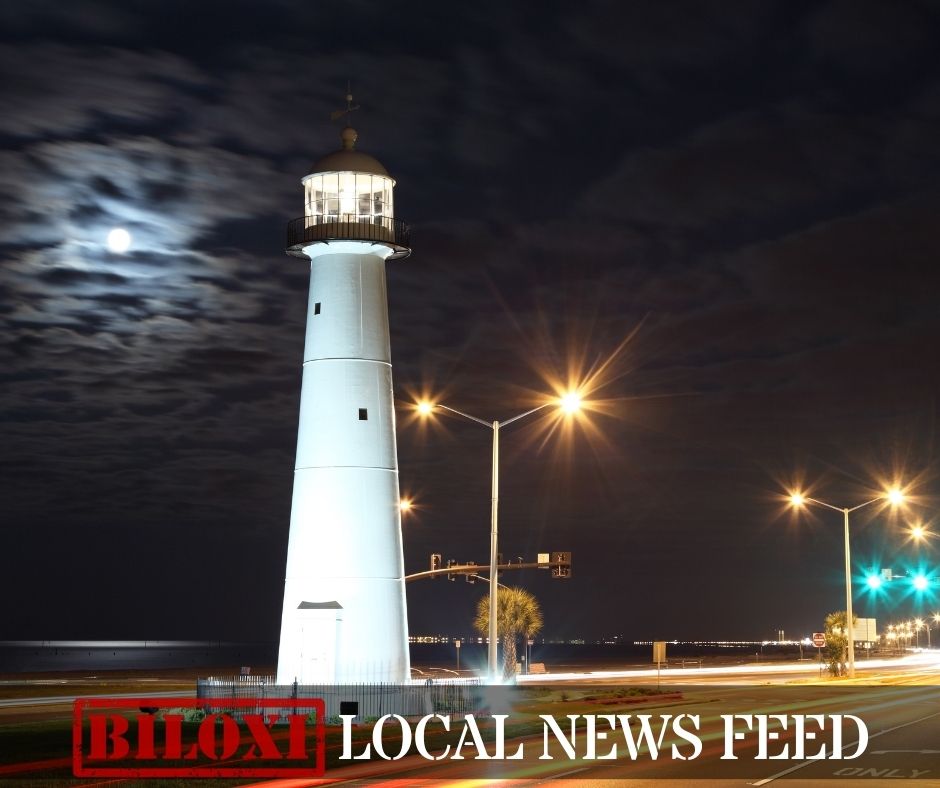News from the South - Alabama News Feed
an Alabama national forest • Alabama Reflector
As Trump enters office, a ripe oil and gas target appears: an Alabama national forest
by Lee Hedgepeth, Inside Climate News, Alabama Reflector
February 10, 2025
This article originally appeared on Inside Climate News, a nonprofit, non-partisan news organization that covers climate, energy and the environment. Sign up for their newsletter here.
CONECUH COUNTY — At the confluence of the Yellow River and Pond Creek in Alabama’s Conecuh National Forest, there’s a place of peace.
It’s a small, icy blue, year-round freshwater spring where the locals often go to unplug. Nestled inside Conecuh National Forest, Blue Spring is surrounded by new growth—mostly pines replanted after the forest was clear cut for timber production in the 1930s.
Nearly a century after that clear cut, another environmental risk has reared its head in the forest, threatening Blue Spring’s peace: oil and gas development.
As the Biden administration came to a close in January, officials with the U.S. Forest Service (USFS) initiated the process of “scoping” the possibility of new oil and gas leases in Conecuh National Forest.
GET THE MORNING HEADLINES.
On Jan. 6, USFS announced it would soon begin a 30-day comment period to solicit public opinion on the proposal, which includes the continued availability of tens of thousands of acres of federal land for oil and gas leasing and the possibility of leasing an additional, nearly 3,000 acres where the federal government owns mineral rights but not surface rights.
Conecuh National Forest stretches along the Alabama-Florida border, spanning more than 85,000 acres across two counties in the Yellowhammer State.
Past efforts to lease large tracts of land in Alabama’s national forests have been unsuccessful, with a planned 2012 lease auction nixed as a result of public outrage over environmental concerns.
Federal oil and gases leases in Alabama aren’t uncommon, though they’re rarely commercially productive, records show. Still, any oil and gas buildout can present various environmental risks, including air and water pollution in an area meant to be preserved as part of America’s environmental heritage, experts warn.
The Forest Service itself acknowledged the various risks involved in oil and gas leasing within Alabama’s national forests in a 2004 environmental impact assessment, though the agency also emphasized in the document its stated goal of expanding energy production and dismissed certain environmental impacts of the project as “negligible.”
In 2012, when federal officials renewed their interest in fossil fuel leases in Alabama, agency representatives pointed to the 2004 environmental assessment as a reason to allow for additional oil and gas development. Environmentalists objected to that analysis, arguing that relying on a then eight-year-old assessment to potentially approve thousands of acres of public lands for extraction was dishonest and legally dubious.
“We have a strong sense of place in the South, and our public forests should not be sold to the highest bidder to be destroyed for short-term profit,” Tracy Davids, director of Wild South, said of the 2012 proposal at the time. “These are the places that families hunt, fish, hike and recreate. Oil and gas drilling will ruin these lands and force us off of our national forests. This is an assault on our heritage and we won’t stand for it.”
This month’s announcement that the Forest Service will analyze oil and gas leasing within Conecuh National Forest may be a way for federal officials to shore up their legal position, updating the environmental assessment necessary for defending against litigation over new oil and gas leases there.
The new analysis would assess “how changed conditions and circumstances could result in a need to update leasing availability decisions described in the 2004 Forest Plan,” the announcement by the agency said.
The USFS’ previous environmental assessment did not include any analysis of the impact of expanded oil and gas development on efforts to mitigate climate change, something environmentalists argue should undoubtedly be part of the government’s decision-making calculus.
This month’s announcement did not mention climate change or greenhouse gas emissions but did say that updating the forest plan and other scoping documents would further government policy to “foster and encourage private enterprise in the development of economically sound and stable industries.”
This is a global biodiversity hotspot that’s being potentially targeted for oil and gas drilling.
– Will Harlan, Center for Biological Diversity
Including impacts on climate change in any environmental assessment around oil and gas development seems far less likely under Trump, who as a candidate regularly trumpeted oil and gas extraction, repeating the conservative catchphrase, “Drill, baby, drill.”
Much of the area proposed for lease availability surrounds recreation sites within the national forest, including Blue Lake, Open Pond, Conecuh Shooting Range and the Leon Brooks Hines Public Fishing Lake.
Will Harlan, southeast director and senior scientist for the Center for Biological Diversity, said environmentalists are worried about the new proposal, which he called “incredibly dangerous.”
“Conecuh National Forest is less than 1 percent of Alabama’s land, so when we’re talking about having oil and gas sites in the national forest, it’s concerning,” he said. “Alabama’s national forests rank No. 1 in the country for species diversity, especially of fish, turtles and mollusks,” he said. “This is a global biodiversity hotspot that’s being potentially targeted for oil and gas drilling.”
Allowing expanded oil and gas development in the forest would present an unnecessary risk, Harlan said.
“There are plenty of lands where oil and gas drilling can occur, but not this spectacularly diverse national forest,” Harlan said.
The U.S. Forest Service’s informal 30-day public comment period ends Feb. 12. Comments on the proposal can be submitted at this website or mailed to Garner Westbrook, USDA Forest Service, 2946 Chestnut St., Montgomery, Alabama, 36107.
YOU MAKE OUR WORK POSSIBLE.
Alabama Reflector is part of States Newsroom, a nonprofit news network supported by grants and a coalition of donors as a 501c(3) public charity. Alabama Reflector maintains editorial independence. Contact Editor Brian Lyman for questions: info@alabamareflector.com.
The post an Alabama national forest • Alabama Reflector appeared first on alabamareflector.com
News from the South - Alabama News Feed
A very dry September forecast with hot afternoons ahead for Alabama.
SUMMARY: Alabama faces a very dry September with hot afternoons continuing through the last week of summer before the autumnal equinox. Sunday begins comfortably cool in the 60s, warming to low 90s by mid-afternoon under mostly sunny skies. A weak wave may bring a few showers tonight, mainly to northwest Alabama, but widespread rain is unlikely. Temperatures will remain above average, hitting mid-90s Tuesday and Wednesday. By next weekend, a trough and front may increase cloud cover and rain chances slightly, potentially lowering temperatures closer to average. Overall, the forecast calls for persistent dry and warm conditions into next week.
A very dry September forecast with hot afternoons ahead for Alabama.
WVTM13 is your home for Alabama breaking news and weather. For your latest Alabama news and weather visit: https://www.wvtm13.com/
For licensing inquiries: https://www.wvtm13.com/licensing
News from the South - Alabama News Feed
Huntsville Fire & Rescue Holds 9/11 Memorial Service | Sept. 11, 2025 | News 19 at 5 p.m.
SUMMARY: On September 11, 2025, Huntsville Fire & Rescue held a memorial service to honor the nearly 3,000 lives lost in the 9/11 terrorist attacks. Military members and first responders gathered at Huntsville Fire Station One, where at 7:46 a.m., lights, sirens, and air horns sounded to replicate the sounds heard during the attacks. Fire Chief Howard McFarland emphasized the importance of remembering the tragedy to educate younger generations and prevent history from repeating. Former Captain Lynn recalled the shock of witnessing the attacks and noted how 9/11 reshaped emergency preparedness. This annual event is held across all 20 Huntsville fire stations.
The Huntsville Fire & Rescue held a 9/11 memorial service.
News 19 is North Alabama’s News Leader! We are the CBS affiliate in North Alabama and the Tennessee Valley since November 28, 1963.
https://whnt.com/
https://www.facebook.com/whntnews19
https://www.instagram.com/whntnews19/
https://twitter.com/whnt
News from the South - Alabama News Feed
News 5 NOW at 8:00am | September 11, 2025
SUMMARY: On September 11, 2025, News 5 NOW covered 9/11 commemorations, including first responders climbing 2,000 steps at Hancock Whitney Stadium to honor the World Trade Center’s 110 stories. The Original Oyster House offered free meals to first responders in Mobile and Baldwin counties. The program also reported a new Vibrio bacterial infection case in Escambia County, highlighting health warnings for beachgoers. Additionally, they discussed a study linking chronic insomnia to increased dementia risk, election recounts in Gulf Shores, and a recent political shooting in Utah, sparking debate over harsher punishments for political violence. Viewer opinions on extraterrestrials and political violence were shared in an interactive social media segment.
First Responders in Mobile honored the heroes of September 11th, a Pensacola woman is in the hospital after being infected with the flesh eating bacteria vibrio vulnificus, and a vote re-count wrapped up in Gulf Shores…
-
News from the South - Kentucky News Feed7 days ago
Lexington man accused of carjacking, firing gun during police chase faces federal firearm charge
-
News from the South - Alabama News Feed7 days ago
Zaxby's Player of the Week: Dylan Jackson, Vigor WR
-
News from the South - Arkansas News Feed7 days ago
Arkansas medical marijuana sales on pace for record year
-
Local News Video7 days ago
William Carey University holds 'tailgates and tourniquets' blood drive
-
News from the South - North Carolina News Feed5 days ago
What we know about Charlie Kirk shooting suspect, how he was caught
-
News from the South - Missouri News Feed7 days ago
Local, statewide officials react to Charlie Kirk death after shooting in Utah
-
Local News7 days ago
US stocks inch to more records as inflation slows and Oracle soars
-
Local News6 days ago
Russian drone incursion in Poland prompts NATO leaders to take stock of bigger threats














































